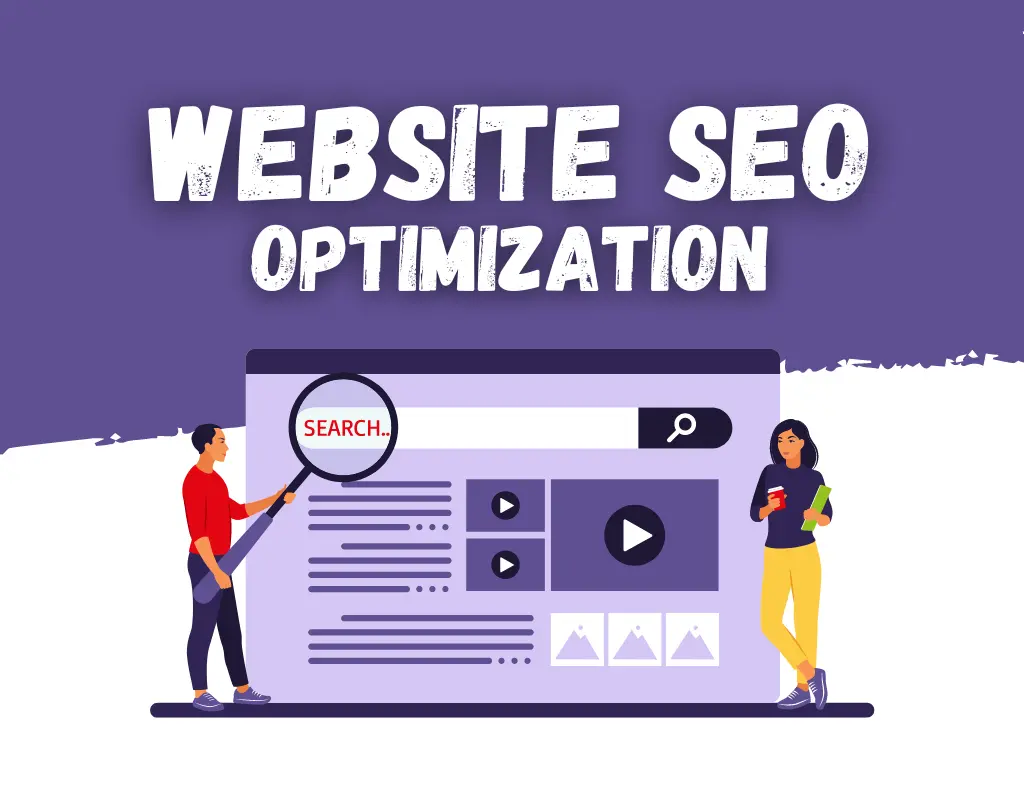In today’s competitive digital landscape, mastering website search engine optimization techniques is crucial for web developers aiming to enhance user experience and improve search engine rankings. Website optimization encompasses a variety of strategies and practices that ensure a site runs efficiently, loads quickly, and ranks well on search engines like Google. From refining on-page elements to leveraging advanced SEO tactics, understanding these techniques can significantly boost a website’s performance and visibility. In this guide, we will delve into essential website optimization methods every web developer should know to achieve superior web performance and elevate their site’s Google ranking.
Meta Tags Optimization:
The use of meta tags is an integral part of on-page SEO, significantly enhancing a website’s visibility and performance. Meta tags are snippets of text that describe a page’s content and are inserted into the HTML of a webpage. They play a critical role in helping search engines understand the content of the page. Here, we will delve into various types of meta tags, including their importance and code examples, as well as discuss Twitter Cards and Open Graph meta tags for social media optimization. Understanding and implementing these tags can boost your website’s SEO and click-through rates (CTR). Below are the key meta tags every web developer should know:
Title Tag
The title tag is arguably the most important meta tag as it dictates the title of the webpage in search results. It should be concise, compelling, and include relevant keywords.
<title>Your Page Title</title>Meta Description Tag
This tag provides a brief summary of the webpage content. Although not a direct ranking factor, a well-crafted meta description can enhance CTR.
<meta name="description"
content="This is a brief and enticing summary of your page content.">Meta Keywords Tag
While less relevant today, some search engines still use this tag. It lists the important keywords related to the content of the page.
<meta name="keywords"
content="keyword1, keyword2, keyword3">Viewport Meta Tag
This tag ensures your webpage is mobile-friendly by controlling the layout on mobile browsers.
<meta name="viewport"
content="width=device-width, initial-scale=1.0">Robots Meta Tag
This tag instructs search engines on how to index your webpage.
<meta name="robots" content="index, follow">Social Media Meta Tags: Twitter Cards and Open Graph
Open Graph Meta Tags
These tags control how your webpage content is displayed when shared on social media platforms like Facebook.
<meta property="og:title" content="Your Page Title">
<meta property="og:description" content="A brief description of your page.">
<meta property="og:image" content="URL_to_image.jpg">
<meta property="og:url" content="http://yoursite.com/page-url">Twitter Card Meta Tags
Similar to Open Graph, these tags optimize your page content’s appearance on Twitter.
<meta name="twitter:card" content="summary_large_image">
<meta name="twitter:title" content="Your Page Title">
<meta name="twitter:description" content="A brief description of your page.">
<meta name="twitter:image" content="URL_to_image.jpg">Structured Data and Schema Markup:
- Structured data, or schema markup, helps search engines better understand the content on your website.
- By adding specific schema types (e.g., Article, Product, Event) to your HTML, you can enhance how your website appears in search results.
<script type="application/ld+json">
{
"@context": "https://schema.org",
"@type": "Article",
"mainEntityOfPage": {
"@type": "WebPage",
"@id": "https://example.com/article"
},
"headline": "Article Headline",
"image": [
"https://example.com/image.jpg"
],
"datePublished": "2023-06-16T08:00:00+08:00",
"dateModified": "2023-06-16T09:20:00+08:00",
"author": {
"@type": "Person",
"name": "John Doe"
},
"publisher": {
"@type": "Organization",
"name": "Example Publisher",
"logo": {
"@type": "ImageObject",
"url": "https://example.com/logo.jpg"
}
},
"description": "A description which could contain html tags"
}
</script>
Keyword-Rich Permalinks:
- Permalinks, or permanent links, are the URLs that point to specific pages or posts on your website.
- Including relevant keywords in your permalinks can help search engines understand the content and potentially improve rankings.
Implementation (WordPress):
/%category%/%postname%/
This permalink structure would result in a URL like:
https://example.com/category/post-titleCanonical URLs:
- Canonical URLs help search engines understand the preferred version of a page when multiple versions exist.
- This prevents duplicate content issues and ensures the correct page is indexed and ranked.
<link rel="canonical" href="https://domain.com/canonical-url">Sitemaps and Robots.txt
- A sitemap is an XML file that lists all the pages on your website, making it easier for search engines to discover and crawl your content.
- A robots.txt file provides instructions to search engine crawlers on which pages or directories should or should not be crawled.
Sitemap (sitemap.xml)
<?xml version="1.0" encoding="UTF-8"?>
<urlset xmlns="http://www.sitemaps.org/schemas/sitemap/0.9">
<url>
<loc>https://example.com/</loc>
<lastmod>2023-06-16T10:07:22+00:00</lastmod>
<priority>1.0</priority>
</url>
<url>
<loc>https://example.com/page1</loc>
<lastmod>2023-06-16T10:07:22+00:00</lastmod>
<priority>0.8</priority>
</url>
<!-- Additional URLs -->
</urlset>Robots.txt
User-agent: *
Disallow: /private/
Disallow: /old-folder/
Sitemap: https://example.com/sitemap.xml
Google Analytics and Google Search Console:
- Google Analytics is a free web analytics service that tracks and reports website traffic, providing valuable insights into your audience, their behavior, acquisition sources, and more.
- Google Search Console helps website owners monitor and maintain their site’s presence in Google Search results, including index coverage, search analytics, and identification of potential issues.
Implementation:
- Add the Google Analytics tracking code to your website’s HTML.
- Verify your website in Google Search Console and set up various reports and tools.
Additional SEO Best Practices:
- Conduct keyword research and optimize your content with relevant, high-volume keywords.
- Ensure your website has a clean, user-friendly structure and navigation.
- Optimize page load times and mobile responsiveness for better user experience.
- Build high-quality backlinks from reputable sources to improve your website’s authority.
- Regularly create and publish fresh, valuable content to keep users engaged and search engines interested.
- Monitor your website’s performance and analytics regularly and make data-driven optimizations.
By implementing these SEO best practices, you’ll be well on your way to improving your website’s visibility, organic traffic, and overall online presence. However, it’s important to remember that SEO is an ongoing process that requires consistent effort, monitoring, and adaptation to evolving search algorithms and user behaviors.

